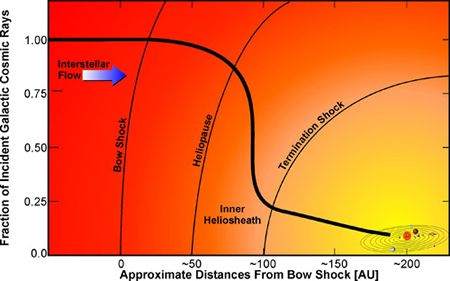While mapping the solar system’s edge for the first time, NASA’s Interstellar Boundary Explorer (IBEX), spacecraft has discovered a ‘space ribbon’ two billion miles long.
As the solar wind reaches the edge of the solar system and collides with the interstellar medium, a shock wave forms, heating particles which then stream away from the boundary.

“We have discovered an arc-shaped ribbon of high-pressure material that looks to be piled-up material from the Sun,” says team member Herbert Funsten. “The IBEX maps and the discovery of the ribbon are completely different from what we thought it should look like. We were expecting tie-dye and instead found noodle soup.”

What the mission has not found is what it was expecting – evidence of large-scale dynamic processes like the storms and tornados that result from the collision of a cold front and a warm front.
“The ribbon follows a circular arc of high pressure that we believe is centered on the direction of the magnetic field of the interstellar cloud through which we are moving,” Funsten said. This magnetic field seems to fundamentally organize the interaction region.
The sky map was produced with data collected by two detectors on the spacecraft over a six-months period. The detectors measured and counted particles known as energetic neutral atoms.

“For the first time, we’re sticking our heads out of the sun’s atmosphere and beginning to really understand our place in the galaxy,” said David J McComas, IBEX principal investigator. “The IBEX results are truly remarkable, with a narrow ribbon of bright details or emissions not resembling any of the current theoretical models of this region.”







